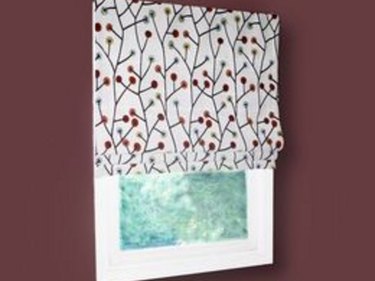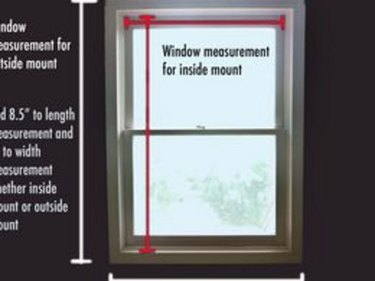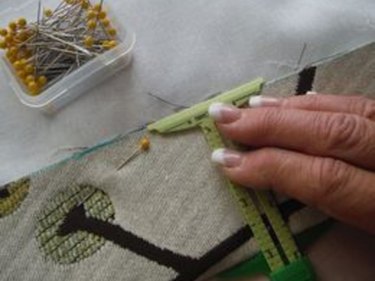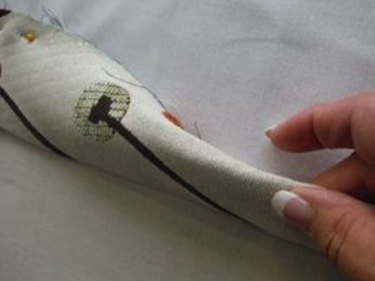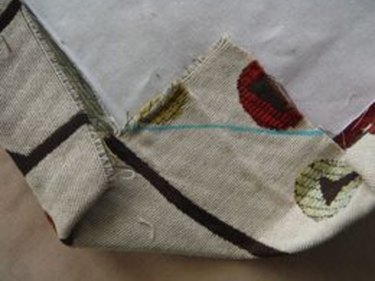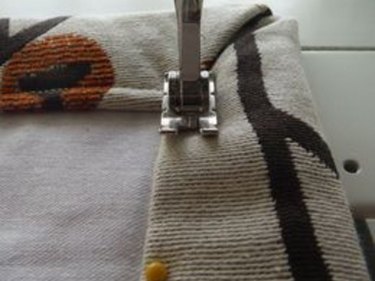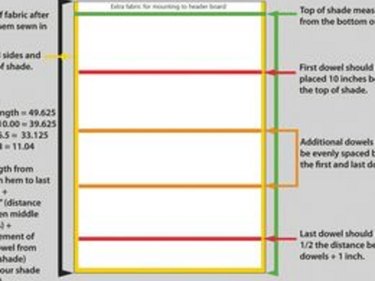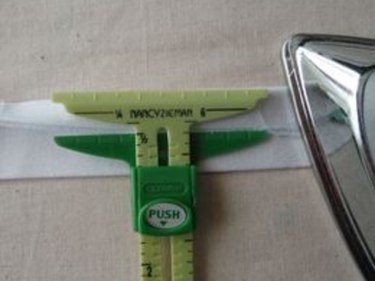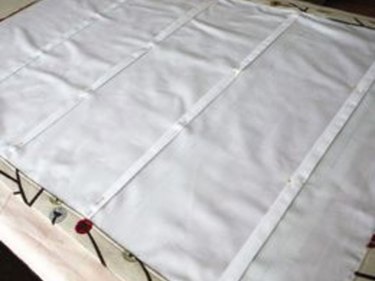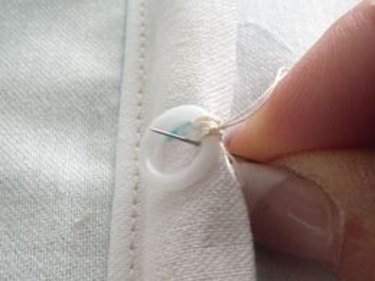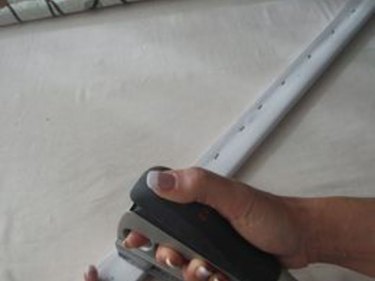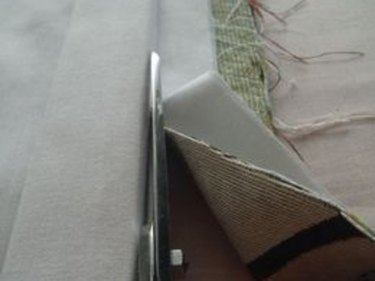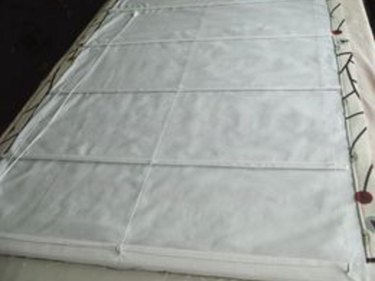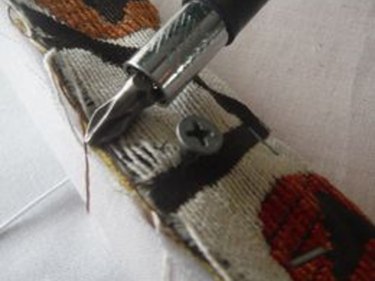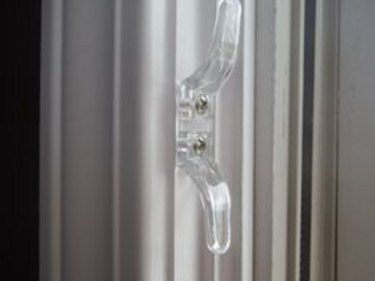Things You'll Need
Tape measure
Decorator weight fabric
Drapery lining
5/16-inch wooden dowels
1-inch by 1/8-inch poplar or balsa board
1 1/2-inch by 1/2-inch poplar or pine board
Nylon cord
Plastic rings
Eye screws
Cord cleat
Staple gun
Wood screws
Portable screw gun
Template (See Resources)
Roman shades have long been used as an elegant solution to a window that needs privacy at times, but where full access to the window is also required. The shades may be hung inside the window with the frame showing, or mounted to the window frame covering it completely. They can also be mounted to the wall above a window to give the illusion of a larger window. Although at first it may seem complicated, a simple roman shade project is something that an average crafter can accomplish in a day.
How to Make Easy Roman Shades
Step 1
Choose fabrics from the home decor section of the fabric store, keeping in mind weight, opacity and color. Purchase lining material to filter the light or to block it out completely. Buy hardware separately or in a kit. Please see the last slide for an itemized list of materials.
Video of the Day
Step 2
Determine if you want an inside mount (meaning the window frame shows) or an outside mount (meaning the frame is covered) and measure the window to determine the width and length of the shade. Use these measurements to figure the fabric requirements. Add 6 inches to the width of the measurement and 8 1/2 inches to the length to get the cut size of the decorator fabric used for the shade. Cut the drapery lining to the final width measurement of the shade and the length measurement of the shade fabric.
Step 3
Lay the shade fabric out on a work table right-side down. Place the lining fabric on top, right-side up in the center of the shade fabric. Fold over and pin a 3-inch hem down each side. Press in place with an iron.
Step 4
Unpin and fold the edge back under the pressed seam to make a 1 1/2-inch final hem on each side. Pin in place and press with the iron.
Step 5
Fold up a 3-inch hem on the bottom, press, fold edge back under the pressed seam to make a 1 1/2-inch final bottom hem, pin in place and press. Unfold the pressed hems and cut off the corner, folding them back into a mitered corner.
Step 6
Sew the hems in down the sides and across the bottom of the shade leaving the folded edges of the mitered corner open like a pocket.
Step 7
To determine the placement of the dowels, measure from the bottom of the hem and mark the finished shade length as determined in Step 1. Mark another line 10 inches down from the line indicating the shade length. (This is the placement line for the first dowel.) Measure from this placement line down to the bottom of the hem. Divide that measurement by 8, then 10, and then 12. Determine which measurement works the best for the shade size and mark placement lines on the lining. (Dowels should be placed 8 to 12 inches apart, with the bottom dowel placed half the distance between the dowels plus 1 inch.)
Step 8
Cut strips of lining fabric 3 inches wide and the length of the lining width for each dowel to be placed. Fold in half and press. Fold the open ends down another 1/2 inch and press.
Step 9
Place these dowel pockets along the placement lines on the lining drawn in step 7 and sew in place using a straight stitch.
Step 10
Make marks for the center line and 3 inches from each edge of the shade at each dowel pocket. Sew a plastic ring at each mark on the dowel pockets. Cut the dowels to the width of the lining and place in each pocket. Cut the 1-inch by 1/8-inch board 1/2 inch short of the width of the shade and slide it into the bottom hem through the mitered corner.
Step 11
Cut the 1/2-inch by 2-inch board 1/2 inch shorter than the width of the shade. Wrap the board with lining fabric and staple in place. Line this header board up with the first dowel and mark the location of the three rings. Insert the eye screws into the header board on the bottom side at these marks.
Step 12
Line the header board up with the pencil line marked to be the top of the shade in step 7 with the eye screws pointing down. Pull the shade up and over the header board and staple in place. Trim off the extra fabric.
Step 13
Tie a cord at the bottom left ring and thread it up through the rings on that side, across through the three eye screws and let hang down the opposite side of the shade. Do this for the center row of rings and again for the right row of rings. Thread all three cords through a cord cone and tie a knot to secure.
Step 14
Start the mounting screws through the header board before installation, either up from the bottom or down from the top depending on where you are mounting the shade. Check the final location and drive the screws into the wood mounting the new roman shade.
Step 15
Install the cleat in the side of the window frame higher than you would normally locate the shade so that it won't be visible or accessible to children.
Tip
Make a work table by covering a table or kitchen island with a vinyl table cloth. Layer bath towels across the surface and top with muslin or an old sheet. This gives you a large surface to lay out your project and press without excessive handling.
Video of the Day
